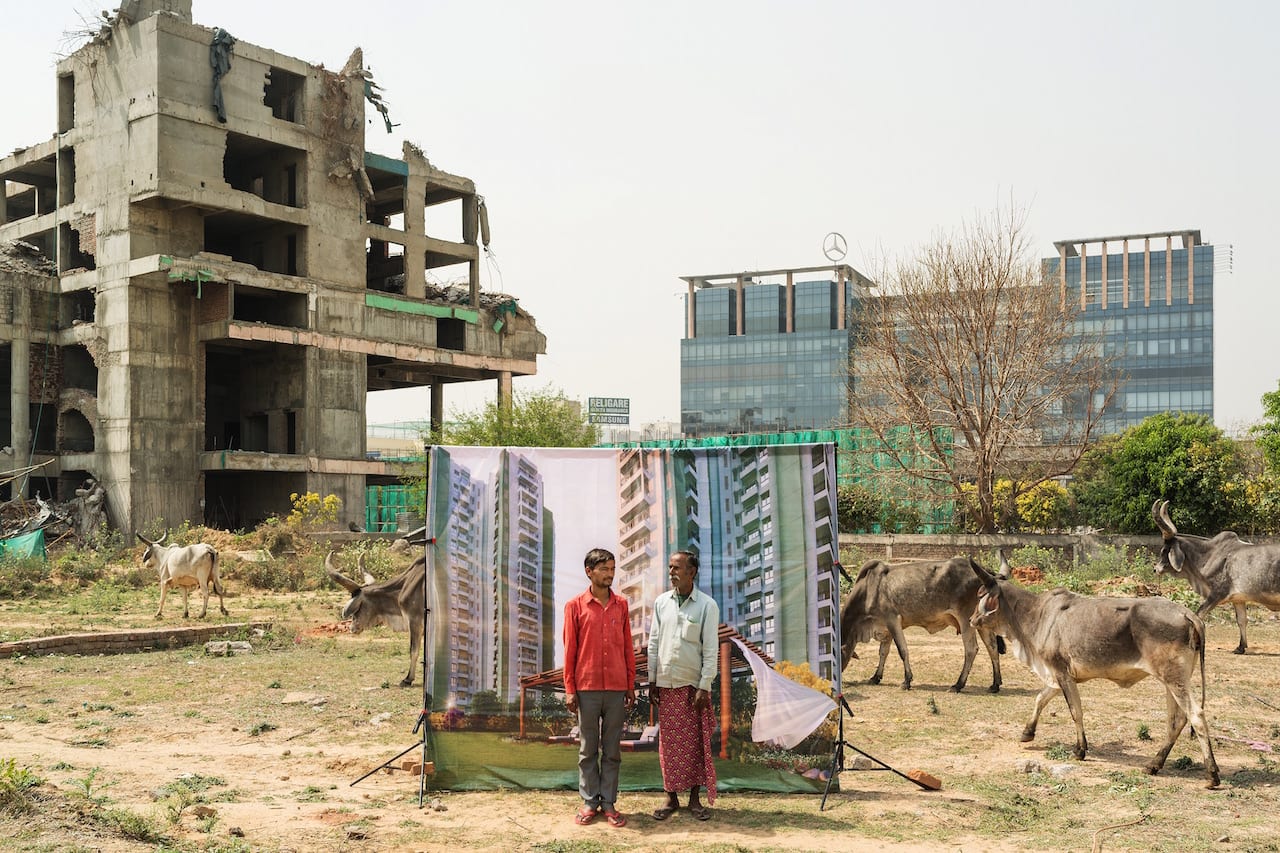“Gurgaon is a paradigm for the new Indian city: entirely privatised with no public space, managed by a few companies which cater to the needs of the middle class. It’s an image as much as a place,” explains Arthur Crestani.
In his series, Bad City Dreams, image and place are fused to construct a paradoxical and layered portrait of the rapidly expanded city, which lies 30km outside the capital, New Delhi. Borrowing from the Indian tradition of studio photography, Crestani photographed migrant workers, security guards and other Gurgaon locals outdoors against a mobile backdrop decorated with real-estate advertising imagery.
With a background in political science and urban affairs, Crestani has always been interested in the political, social and emotional dimensions of place and the power relations that underlie the way cities are built and managed. To him, architecture is the physical translation of these layers, an expression of “desire, ambition and ideology”.
Fascinated by the gulf between Gurgaon’s luxurious architectural projects and deeply segregated society, Crestani has been making work about the shifting landscape of urban India since his first visit to the country in 2010.
It was a university exchange that brought the young French photographer to Delhi, where he first picked up a camera to document his journey as he discovered the environs. Charting the expansion of the metropolis from the frantic, congested centre into its surrounding agricultural areas, Crestani’s projects, City Limits and Isolation, settled on the development of Gurgaon.

The photographer was captivated by the enclaves of wealth dotted around the unused land and the borders these gated communities were creating. “Everyone had an idea of what change would look like. And Gurgaon was offering just that,” he says.
The crux was working out how to visually represent the coexisting realities of Gurgaon. For many years the photographer had been collecting property advertisements – hyper-glossy promises of luxurious lifestyles.
This fantastical imagery was at odds with the reality he encountered; a segregated property bubble, characterised by a lack of infrastructure and planning, with over 50 per cent of the flats remaining vacant. Juxtaposing these glamorous artists’ impressions against the dusty reality, he was able to speak both about the contradictions of the city and its constructed image.
Placing people he met near the setting of the developers’ drawings, in front of a placard of the city’s imagined representation, Crestani draws attention to its sharp societal divide. “In Gurgaon, the people you encounter on the street are the poor: migrant construction workers, domestic helpers or peasants. Middle-class people stay in their cars or at home,” he says.
“My interest was in those who, although excluded from the chest-thumping discourse of prosperity, modernisation and development, made up the majority of Gurgaon’s population.”
arthurcrestani.com This article was first published in the March issue of BJP, which is available via www.thebjpshop.com




